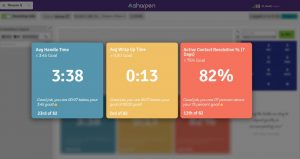— May 12, 2018

TeroVesalainen / Pixabay
As organizations continue to take digitally-driven and omnichannel approaches to marketing, one tried-and-true communications channel continues to get the short end of the stick: email. Email marketing has evolved with the digital age, offering more capabilities to drive awareness, conversion, and retention than ever. Yet, despite the longevity and ubiquity of email, recent research from the DMA indicates its budget has plateaued or declined while investments in other digital channels continue to accelerate.
Email’s stagnant budget is likely representative of the outdated methods marketers use to quantify the channel’s value: open and click rates. These metrics no longer suffice when it comes to accurately gauging the influence that email marketing can have on current and prospective customers.
To uncover the hidden power of email, marketers need to move beyond clicks and open rates and instead focus on email’s ROI. Gaining visibility into the bottom-line impact of email and how it works in combination with other digital channels offers two major benefits to marketers.
Breaking down silos for holistic view of customer journey
Today’s empowered consumers interact with brands across more channels and devices than ever before. The problem is that email, like most other channels, is typically executed and measured in a silo. And when channels are measured in silos, it’s incredibly difficult to track the full consumer journey or identify the influences and synergies that exist between channels and tactics. Operating in silos also prevents marketing teams from working together toward shared goals, creating disjointed and oftentimes conflicting experiences for consumers.
To understand the true impact of email, marketers need to move away from siloed measurement to an approach that accounts for the cross-channel consumer journey. Methods like multi-touch attribution consolidate data and fractionally assign credit to all the channels and tactics that influenced a desired action or business outcome. With a holistic view of all marketing channels, marketers can quantify email effectiveness and ROI, and understand how email works in combination with other channels and tactics to drive engagement, leads, conversions, sales, and other desired results. Moreover, adopting attributed metrics as a source of truth opens up opportunities to optimize not just promotional campaigns, but triggered, targeted, and even transaction emails as well.
Improving content relevancy
Email marketing makes its boldest impact when it can deliver smart, customized and, most importantly, relevant messaging and offers. But relevance remains a ‘known unknown’ for many marketers, with two in five (42%) marketers saying that only ‘some’ of their emails are relevant to their customers at best.
This is another area where more advanced measurement approaches can help. It can be difficult to know which marketing messages are resonating among different audience segments when marketers lack insight into the attributes and preferences of their customers and prospects. Multi-touch attribution approaches that incorporate robust audience attribute data into the analysis give email marketers an opportunity to fine-tune campaigns and develop focused, personalized messages for the right audience. With greater intelligence into the creatives, messages and offers that are most effective for each audience, marketers can create a better experience for consumers, while driving the best results for the business.
In today’s market, consumers expect brands to deliver a personalized, relevant experience across all touchpoints, including email. By moving away from flawed metrics like opens and clicks and embracing more advanced measurement approaches, marketers can maximize the effectiveness of their email marketing programs, as well as their marketing mix overall.
Digital & Social Articles on Business 2 Community
(25)




